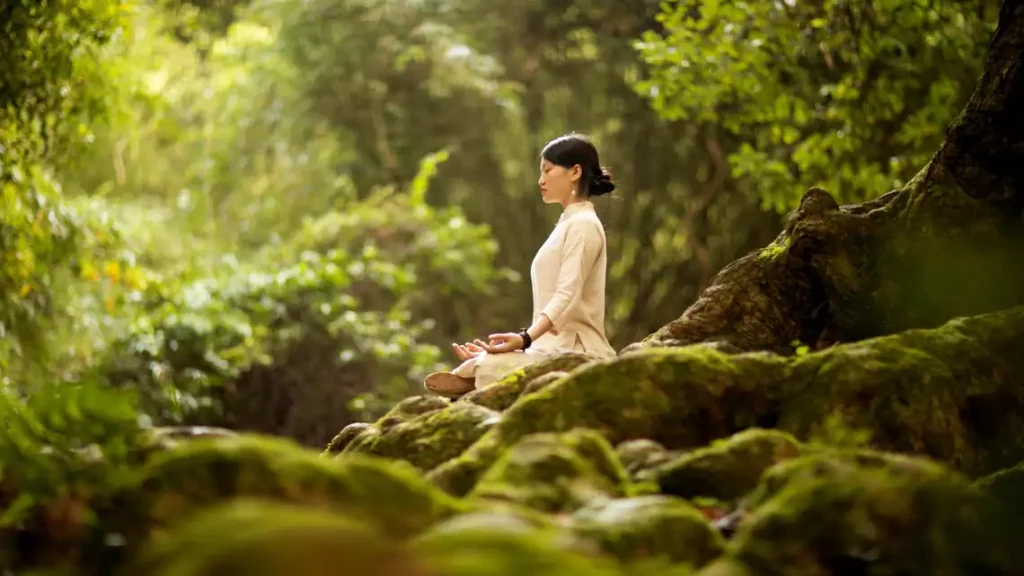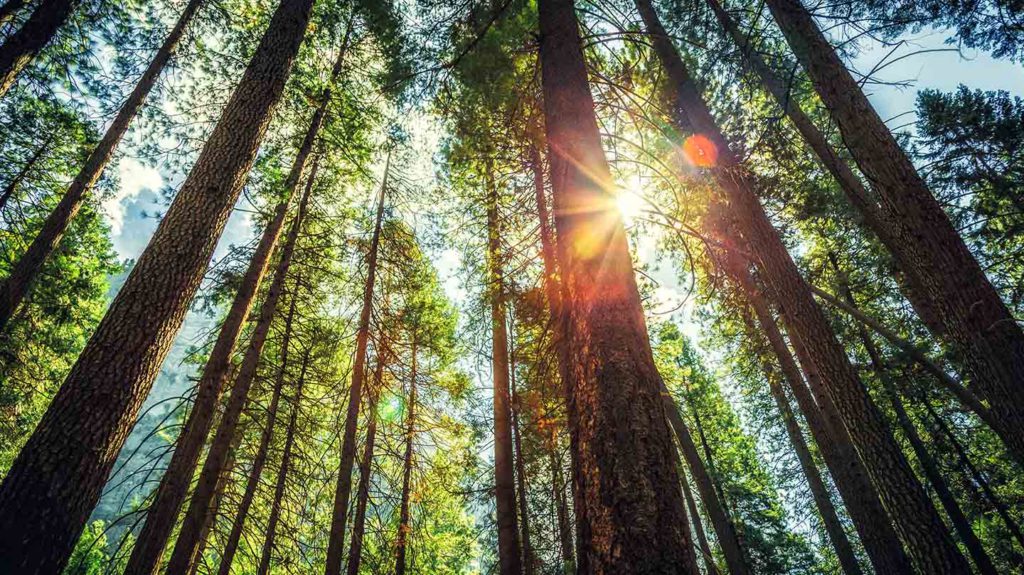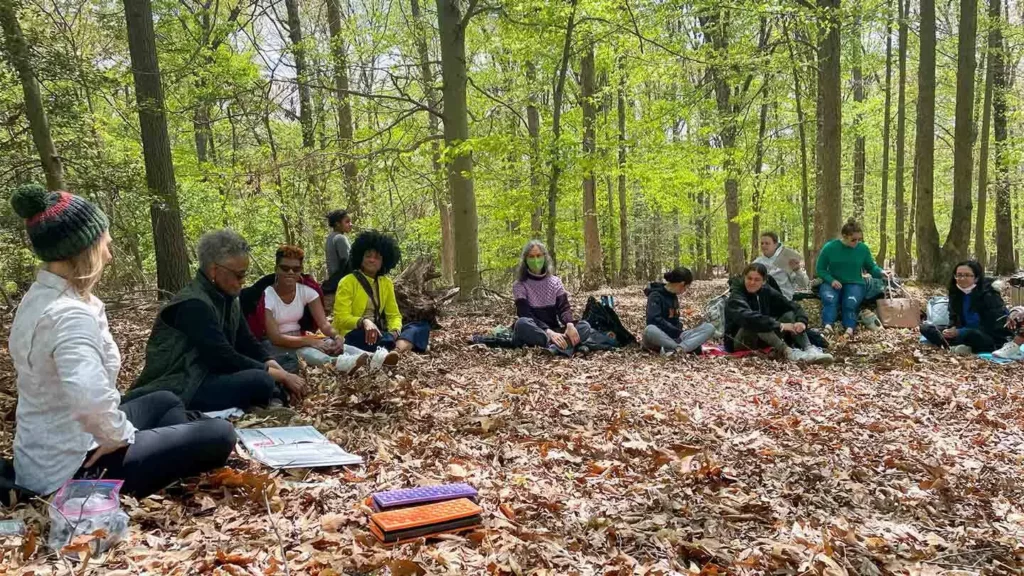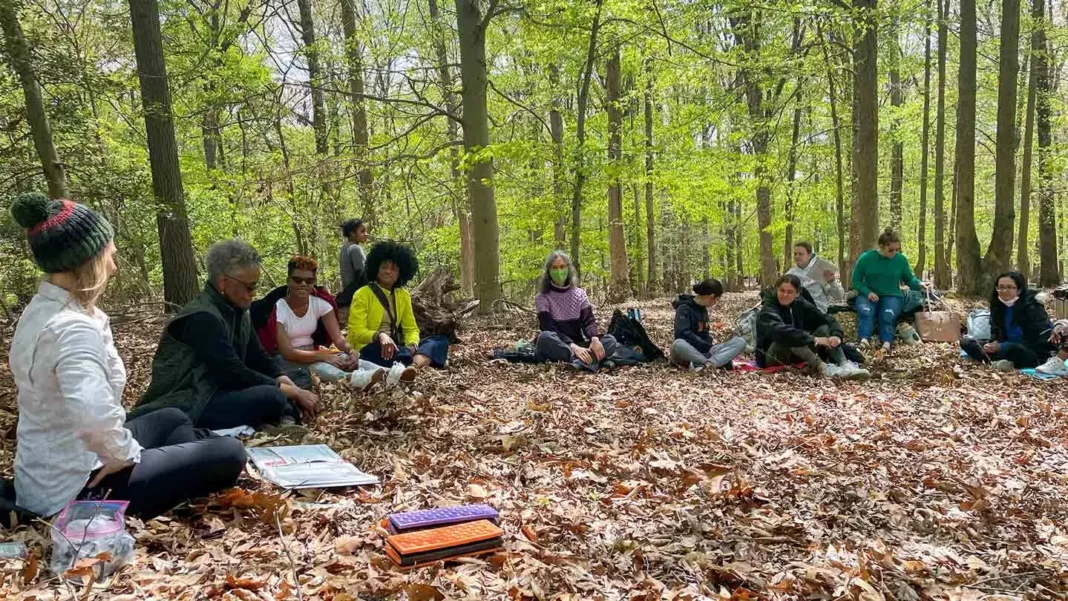-Do I need to pack a swimsuit?
-Is the “bathing” part private, you ask?
-What exactly does a guide do?
-“Will I have to embrace trees in front of people? I don’t want to appear odd.
-Oh, the forest bath! A remarkable wellness practice that raises a lot of questions.
A lot of people have asked us what forest bathing is and how they might learn to practice it. Friends, stop searching now! Here, we’ll explain everything to you.

First off, what does the term “forest bathing” mean?
No swimsuits are required, spoiler! Additionally, no bathtubs are utilized. (However, wouldn’t a private bubble bath in the middle of a gorgeous forest be lovely?)
Simply said, the word “forest bathing” is the English equivalent of the Japanese wellness practice known as Shinrin-yoku. Translations for “shinrin” and “yoku” include “forest” and “bathing.”
In the West, we frequently think of bathing as taking a dip in a body of water, but the Japanese use the term “shinrin-yoku” to describe taking a bath in something other than plain ol’ water: the air of the forest.
The canopy of a huge beech tree in a woodland lets in midday sunshine.
Close your eyes and see yourself strolling through a forest.
Can you picture the aroma and sensation of the air? It can smell like pine needles, or it might have a deep earth smell, or it might just feel like you’re breathing in brand-new oxygen.
Whatever comes to mind for you, our point is that we can physically feel that the air quality is different when we enter a forest and take a few breaths. This understanding has been the driving force behind Nippon Medical School’s forest medicine research for many years, which in turn has fueled the global popularity of forest bathing.
Taking ourselves into a forested area and “bathing” (or basking) in the forest atmosphere, breathing in the healthy air, and slowing down by reconnecting to nature through the senses, allowing our thinking minds some much-needed downtime, is what forest bathing is all about.

How is a walk different from a FOREST bath?
Our physical and emotional health can benefit from a few kilometers of trekking on a forested route in many ways, but forest bathing is an entirely new way to spend time in nature.
Forest bathing focuses on slowing down a lot and observing our relationship to the world around us through the senses of our body, in contrast to a walk when we are focused on going from Point A to Point B (which is just more GO-GO-GO and tends to feed into our usually accelerated pace of life). It involves increasing awareness, calming down, and remembering that we inhabit a living, breathing planet that is home to a variety of plants, animals, birds, and other wildlife.
Want to feel how soft the moss is by petting it? Do it now.
Do you want to inhale the aroma of trampled-up woodland leaves? Grab a few and revel in them.
Do you want to recline and gaze at the clouds passing by the trees? Take your time while you settle in.
These are all illustrations of forest bathing:
By focusing on how your senses connect you to the world around you, you may clear your thoughts and relax. The best period for a woodland bathing session is ideally 2-3 hours, so as to fully lean in.
Consider taking a woodland bath. A map can be useful!
Although forest bathing is a simple practice, it can be very challenging to carry out.
Letting go of the productive mindset is difficult, we must take breaks because we are only human. That’s all there is to it. A forest treatment guide is trained to expertly assist you in stepping into your forest bathing experience and truly embracing your time there. Nature is a fantastic location to go to regain our attention and capacity to focus.
A designed sequence of forest bathing invites will be made available to you when you sign up for an experience with a forest therapy guide. This will help you open up to your senses, take in new details in your environment, and completely honor your decision to disconnect from technology.
A guide will also keep the time for you, allowing you to take your attention off the time, and take you to specially chosen forested areas with particular tree species and other natural aspects that are known to promote relaxation.
Additionally, you’ll be interacting with other people, which renews our feeling of our interdependence on one another and the web of life that surrounds us.




